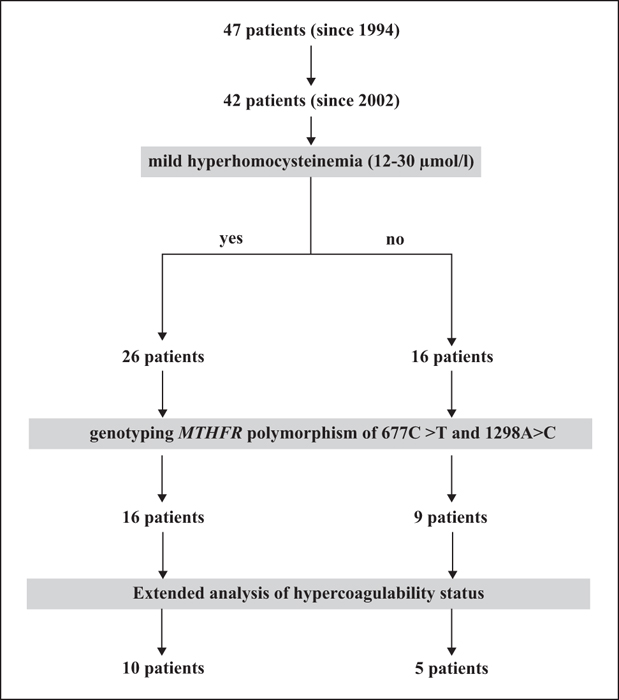European Journal of Dermatology
MENULivedoid vasculopathy: does hyperhomocysteinaemia play an aetiological role? Volume 29, issue 3, May-June 2019
- Key words: livedoid vasculopathy, hyperhomocysteinaemia, hypercoagulative factor, MTHFR, PAI1, F2, F5 Leiden
- DOI : 10.1684/ejd.2019.3554
- Page(s) : 287-93
- Published in: 2019
Background: Livedoid vasculopathy (LV) has been shown to be associated with hypercoagulability. However, relevant genetic and exogenous thrombophilic factors are not fully determined. Objectives: To evaluate the frequency of hyperhomocysteinaemia (HHCE) and genotypes of hypercoagulative factors in LV patients. Material and Methods: Plasma homocysteine level was measured in 42 LV patients. Polymorphism of MTHFR (677C > T and 1298A > C), PAI1 (-675 5G/4G and -844A > G), and F2 (20210G > A), and the F5 Leiden mutation, as well as biochemical parameters for hypercoagulability, were analysed. Results: Of the LV patients, 62% revealed mild HHCE. Polymorphisms of MTHFR were observed in 75% and 56% and the PAI1 -675 5G/4G polymorphism in 100% and 83% of patients with and without HHCE, respectively. All LV patients with renal failure had mild HHCE. A high level of comorbidity of hypertension (99%) and diabetes type 2 (44%) were noted. Conclusion: HHCE seems to play a major pathogenetic role in LV. A high prevalence of further procoagulative factors might support the view that LV is a “complex disease”.


